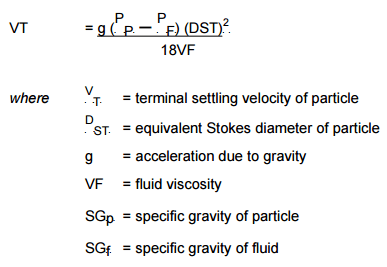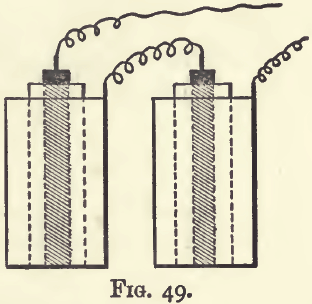Beaker Decantation Method: Classify Particles by Settling

This method for Beaker decantation is a technique used to separate a mineral sample into two size fractions according to the differences in settling velocities of the particles. It is a technique which can be used to accurately split a sample at a pre-determined cut size but has some disadvantages in that it is a time consuming method […]
Settling and Thickening Test Procedure

The choice of Settling and Thickening test method and procedure depends to some extent upon the temperature of the pulp, its flocculating characteristics, the required supernatant clarity, and the equipment available. The Long Tube Method may be used for all materials which settle without a clearly defined interface. However, where the feed in question is well flocculated, either […]
Flocculation Test Procedure
A Flocculation Test Procedure is used to determine how much Flocculants need be added to solids in suspension (slurry or pulp) to cause the individual particles to collect in the form of flocs. The formation of flocs aids in improved settling rates, better overhead clarity and/or faster filtration rates. There are three main methods for achieving aggregation of […]
Determination of Lead by Titration
This titration method lets you determine what your lead (Pb) assay contain is: Volume of the solution before boiling is 65 cc. Water and 10 cc H2SO4. Boil gently 5 minutes. Filter hot at approximately 93°C or cold at 23ºC. Ethyl alcohol added when required. No.2 munktell filter papers. Wash three times with cold water, […]
Zinc Determination Method by Titration
You can perform a Zinc determination using this titration method with methyl orange as your indicator. To 0.5 grams of sample add 10 cc’s HCl and boil for several minutes. Add 3 drops of NH3 and boil until the NH3 is expelled. Add 40 cc’s NH4Cl solution and 15 cc’s NH4OH and bring to a boil. Filter […]
Iodide Method for Copper Analysis
A simple titration using iodide was turned into a method for assaying copper and obtain reliable analysis. To .5 grams of sample in a 250 cc beaker add 8 cc’s of HN03 and after violent action has ceased place on low temperature plate and decompose slowly until all brown fumes of nitrous oxide are expelled. […]
Electrolytic Determination of Copper | Assay

If you need a method for the Electrolytic Determination (Assay) of Copper, use this procedure: Weigh out sample. In the case on concentrate use .5 grams, with the ore use 1 gram. Decompose slowly with nitric acid on the hot plate using a few crystals of KC103 after the nitrous oxide fumes are expelled. Omit the […]
Lead Assay Titration with Ammonium Molybdate
1 gram of sample is decomposed with longer appear 10 cc’s of H2SO4 is added. This solution is evaporated to dryness and allowed to cool. Add 10 cc’s H2SO4 and 65 to 70 cc’s H2O and heat to boiling to dissolve all soluble salts. Do not boil! Filter by decantation and wash three times with […]
Determination of Nickel using Dimethylglyoxime
To obtain a gravimetric determination of nickel using dimethylglyoxime: Weigh and measure a sample so that not over 100 mg. Of nickel present. Add 10 cc’s of nitric acid .5 to .1 grams of potassium chlorate and digest on the steam plate adding more potassium chlorate if necessary to effect solution. Evaporate to dryness. Cool […]
Sodium Thiosulphate (Hypo) and Fluoride to Assay for Copper
Assay copper using fluoride and Sodium Thiosulphate (Hypo) to titrate with, you’ll need: 8 cc’s of nitric acid are placed on given weight of sample and heated on the hot plate. Potassium Chlorate is added when all brown fumes have been driven off. 10 cc’s water are added and solution is again heated then taken […]
